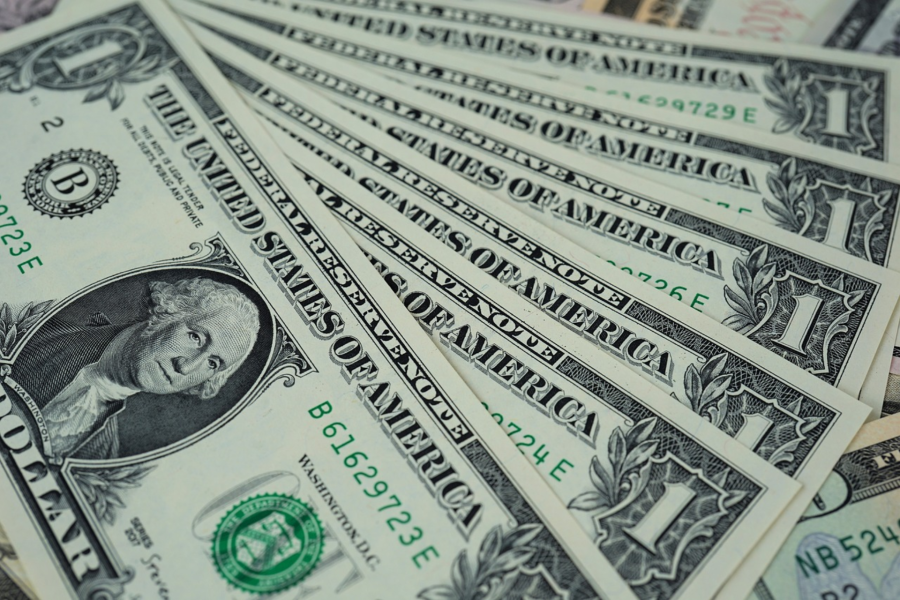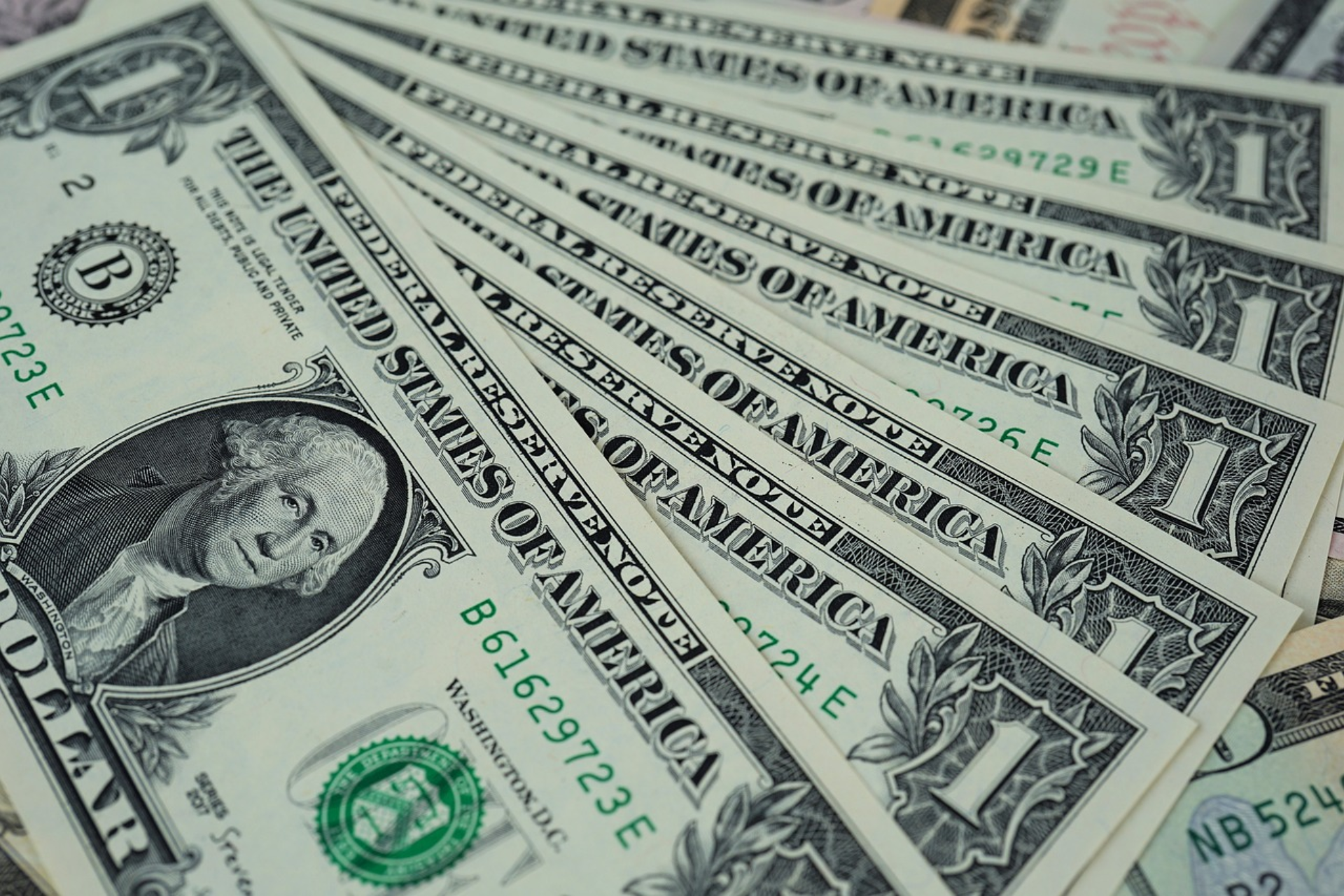
Buoyant dollar within striking distance of 150 yen
The dollar began the last quarter of the year in the ascendant on Monday due to prospects of U.S. interest rates staying higher for longer, and the yen’s slide to a near one-year low put traders on watch for intervention by Japanese authorities.

Reuters: The dollar began the last quarter of the year in the ascendant on Monday due to prospects of U.S. interest rates staying higher for longer, and the yen’s slide to a near one-year low put traders on watch for intervention by Japanese authorities.
U.S. DOLLAR
Currency moves were subdued in early Asia trade with parts of Australia out for a holiday and China away for its Golden Week, though analysts said a narrowly-averted U.S. government shutdown could bring some relief to markets.
The yen eased to 149.83 per dollar, its weakest in over 11 months, moving ever close to the 150 mark that some traders believe could trigger intervention by Japanese authorities, similar to their action last year, to support the currency. “Intervention risks could limit, if not partially reverse yen losses; especially as dollar/yen dangerously flirting with 150 prompts push-back from Tokyo,” said Vishnu Varathan, head of economics and strategy at Mizuho Bank.
ALSO READ: Elon Musk: How much is the South Africa-born billionaire worth?
“But the intent of the Ministry of Finance is not a clear line in the sand. Nor is the Bank of Japan likely to buckle under yen pressures to concede a hawkish overhaul at pain of far more lasting economic damage.” A summary of opinions at the BOJ’s September meeting out on Monday showed policymakers discussed various factors that must be taken into account when exiting ultra-loose policy. “They’re wary of tightening too early and squashing a rise in inflation and growth,” said Jarrod Kerr, chief economist at Kiwibank. “They deserve to be cautious, though.”
In the broader currency market, the euro lost 0.06% to $1.05665, after ending the previous quarter with a 3% fall, its worst performance in a year. Sterling was last 0.14% lower at $1.21875, having similarly slid nearly 4% against the dollar in the third quarter. The U.S. dollar index , however, stood not too far from its recent 10-month high and was last at 106.27, after clocking its best quarterly performance in a year last month thanks to persistently hawkish Federal Reserve rhetoric.
“I’d rather be in dollars at the moment than euros or pounds or others,” said Kiwibank’s Kerr. “I think the dollar will find a bit more support.” The U.S. Congress late on Saturday passed a stopgap funding bill with overwhelming Democratic support in a bid to avoid the federal government’s fourth partial shutdown in a decade, a move which Pepperstone’s head of research Chris Weston said “should be welcomed by risky assets”.
ALSO READ: Who is the richest person in the world today? Top 10 list – 2 October 2023
“We also now have a firm understanding that the U.S. Labor Department will release nonfarm payrolls data this Friday, as well as the U.S. CPI report on 12 October, which may have not been the case had the government shut down,” he said. “This puts the 1 November FOMC meeting back on the table as a potential venue for a further 25-basis-point rate hike.” Elsewhere, the Australian dollar slid 0.47% to $0.64045, while the New Zealand dollar edged 0.19% lower to $0.5987, as traders looked ahead to rate decisions from their respective central banks this week.
BRITISH POUND
Reuters: The pound rose on Friday after data showed the British economy grew quicker than expected since the start of the COVID-19 pandemic, but was still set for its worst quarter against the dollar in a year. The Office for National Statistics said Britain’s economy in the second quarter of 2023 was 1.8% larger than in the final quarter of 2019, the last full quarter before the start of the pandemic. Its previous estimate on Aug. 11 concluded the economy was still 0.2% smaller than before the pandemic, which had placed it at the bottom of the table among major advanced economies.
Sterling rose by as much as 0.52% to a session high of $1.2265, and was last at $1.2264. For the quarter, however, the currency has lost 3.3% in value. Earlier this week, it hit a six-month low of $1.2211 under pressure from the ongoing rise in the dollar, which was heading for its strongest quarterly performance in a year.
ALSO READ: Transnet CEO Portia Derby and CFO resign from their positions
“Sterling has rallied in line with the dollar correction into this morning’s market open, but there are no real UK-specific drivers that would justify a sustained sterling outperformance at this stage,” ING strategist Francesco Pesole said. The dollar is getting an outsized boost from a hefty rise in U.S. Treasury yields, which reflects investors’ belief that U.S. interest rates are unlikely to start falling anytime soon.
The 10-year note has risen 45 basis points this month, compared with an 8 bps rise in 10-year UK gilt yields , which saps the pound’s appeal to non-UK investors that can bag juicier returns elsewhere. Money markets show traders have not ruled out one final rate hike from the Bank of England this year and place a 33% chance on an increase at the upcoming meeting in November.
Just a few weeks ago, traders were pricing in a peak of around 6% in UK rates next year. Removing that prospect has sent the pound down by over 3% this month, marking its largest monthly slide since last September’s budget crisis stripped almost 4% off the currency. Against the euro , the pound has lost 0.6% this quarter and was last up 0.1% on the day against the single European currency at 86.51 pence.
ALSO READ: WATER SHIFTING – what is it, why, and where is it being implemented?
SOUTH AFRICAN RAND
Reuters: The South African rand strengthened against a weaker dollar on Friday after U.S. Treasury yields lost some steam, infusing some risk appetite into the markets. At 1543 GMT, the rand traded at 18.8850 against the dollar, about 0.54% stronger than its previous close. The dollar last traded around 0.07% weaker against a basket of global currencies.
“The rise in U.S. rates has finally run out of steam. Some dovish Fed speak yesterday saw yields ease off 15+ year highs,” Rand Merchant Bank analysts said in a research note. “Whether this is a change in direction or just a pause remains to be seen. But global markets sigh with relief.” Like other risk-sensitive currencies, the rand often takes cues from global factors such as U.S. monetary policy and the direction of the safe-haven dollar.
Locally, data showed South Africa posted a trade surplus of 13.28 billion rand ($703.87 million) and a budget deficit of 47.33 billion rand in August. Shares on the Johannesburg Stock Exchange fell, with the blue-chip top-40 index closing nearly 0.3% lower. South Africa’s benchmark 2030 government bond was stronger, with the yield down 23 basis points to 10.810%.
ALSO READ: On This Day in South Africa: What happened on 2 October?
GLOBAL MARKETS
Reuters: Japanese stocks soared on Monday, with the exporter-heavy Nikkei 225 share average buoyed by the yen’s slide to its lowest point in a nearly a year and after the U.S. avoided a government shutdown. However, the rest of the region’s equity markets were mixed, with Australia’s oil and resource shares hurt by the decline in crude prices last week. Trading was also thinned by a market holiday in Hong Kong, while mainland China had been shut since Friday for the Golden Week holiday, which runs until the end of this week.
The Nikkei jumped to be 1.6% higher as of 0100 GMT, rebounding from its lowest close in more than a month at the end of last week. U.S. stock futures rose 0.6%, pointing to a rebound from the S&P 500’s 0.3% drop on Friday. The weekend’s last-minute stopgap funding bill allowed the government to keep operating through Nov. 17, and means key data releases including Friday’s monthly payrolls report can go ahead on time.
“The shutdown risks are only delayed, not eliminated,” TD Securities strategists wrote in a client note. “A sense of reduced uncertainty is likely to drive a small relief in markets,” but “market volatility is likely to remain elevated as investors wait for the next catalyst, which is likely to be top-tier data.” Japanese stocks were also boosted by the Bank of Japan’s quarterly Tankan survey, which showed an improvement in business sentiment.
ALSO READ: SASSA: Officials positive October social grants will be paid timeously
At the same time, the yen slid on Monday to its lowest since Oct. 21 at 149.74 per dollar , even as the broader rally in the U.S. currency took a breather following the dollar index’s climb to a 10-month peak last week. A weaker yen increases corporate earnings garnered abroad when they are repatriated. Elsewhere in the region, the mood was more muted. South Korea’s Kospi rose 0.1%, while Australia’s benchmark stock index edged down 0.05%.
In addition to the drag on energy and other resource shares, Australian investors were also cautious ahead of a Reserve Bank policy decision on Tuesday, the first under new governor Michele Bullock. New Zealand’s central bank sets policy on Wednesday. The country’s stock benchmark fell 0.5%. Declines in Antipodean equities came despite fresh signs that the economy of key trading partner China may be stabilising.
Although a private gauge of factory activity in data over the weekend unexpectedly declined, it stayed in expansionary territory – a day after official data registered the first expansion in six months. Crude oil recovered some ground from Friday’s 1% tumble, as the positive news from the U.S. and China improved the outlook for demand. Brent December crude futures rose 18 cents, or 0.2%, to $92.38 a barrel after falling 90 cents at the end of last week. U.S. West Texas Intermediate crude futures gained 23 cents, or 0.3%, to $91.02 a barrel, after losing 92 cents on Friday.
ALSO READ: SASSA: Old age grant INCREASE
Published by the Mercury Team on 2 October 2023
